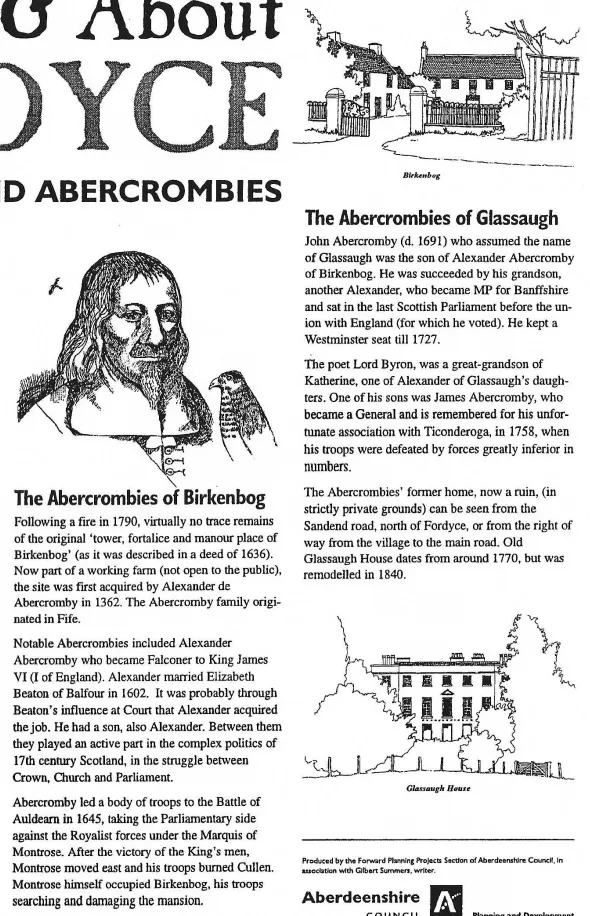Around & About Fordyce
The Ogilvies and Abercrombies
Findlater Castle
Findlater Castle was founded by Sir Walter Ogilvie. In 1455, King James II authorised Sir Walter Ogilvie to strengthen his castle at Findlater and build “a place of strength”. Probably the headland had been fortified since the 12th century when the Sinclairs (of Deskford) were given the lands by King David I. A Sinclair heiress married Sir Walter Ogilvie of Auchleven in 1437.
A folk tale told within living memory in Sandend explains the abandonment of Findlater as a result of the lady of the castle, while standing before an open window overlooking the sea, letting fall her infant son who perished on the waves below. (In some versions of the tale, the careless guardian was a nurse.) In fact, Findlater Castle was deserted by the mid-17th century, when the Ogilvies completed Cullen House.
The Findlater Doocot
A 16th-century “beehive” type doocot (dovecot), recently restored, can be seen in the fields to the south of Findlater Castle.

The Abercrombies of Birkenbog
Following a fire in 1790, virtually no trace remains of the original “tower, fortalice and manor place of Birkenbog” (as it was described in a deed of 1636). Now part of a working farm (not open to the public), the site was first acquired by Alexander de Abercromby in 1362. The Abercromby family originated in Fife.
Notable Abercrombies included Alexander Abercromby who became Falconer to King James VI (I of England). Alexander married Elizabeth Beaton of Balfour in 1602. It was probably through Beaton’s influence at Court that Alexander acquired the job. He had a son, also Alexander. Between them, they played an active part in the complex politics of 17th-century Scotland, in the struggle between Crown, Church, and Parliament.
Abercromby led a body of troops to the Battle of Auldearn in 1645, taking the Parliamentary side against the Royalists led by the Marquis of Montrose. After the victory of the King’s men, Montrose and his troops burned Cullen. Montrose himself occupied Birkenbog, his troops searching and damaging the mansion.
The Abercrombies of Glassaugh
John Abercromby (d. 1691), who assumed the name of Glassaugh, was the son of Alexander Abercromby of Birkenbog. He was succeeded by his grandson, another Alexander, who became MP for Banffshire and sat in the last Scottish Parliament before the union with England (for which he voted). He kept a Westminster seat till 1727.
The poet Lord Byron was a great-grandson of Katherine, one of Alexander of Glassaugh’s daughters. One of his sons was James Abercromby, who became a General and is remembered for his unfortunate association with Ticonderoga in 1758, when his troops were defeated by forces greatly inferior in numbers.
The Abercrombies’ former home, now a ruin (in strictly private grounds), can be seen from the Sandend road, north of Fordyce, or from the right-of-way from the village to the main road. Old Glassaugh House dates from around 1770 but was remodelled in 1840.

Produced for the Aberdeenshire Projects Section of Aberdeenshire Council, in association with Gilbert Summers, Fordyce.
Aberdeenshire COUNCIL
Planning and Development